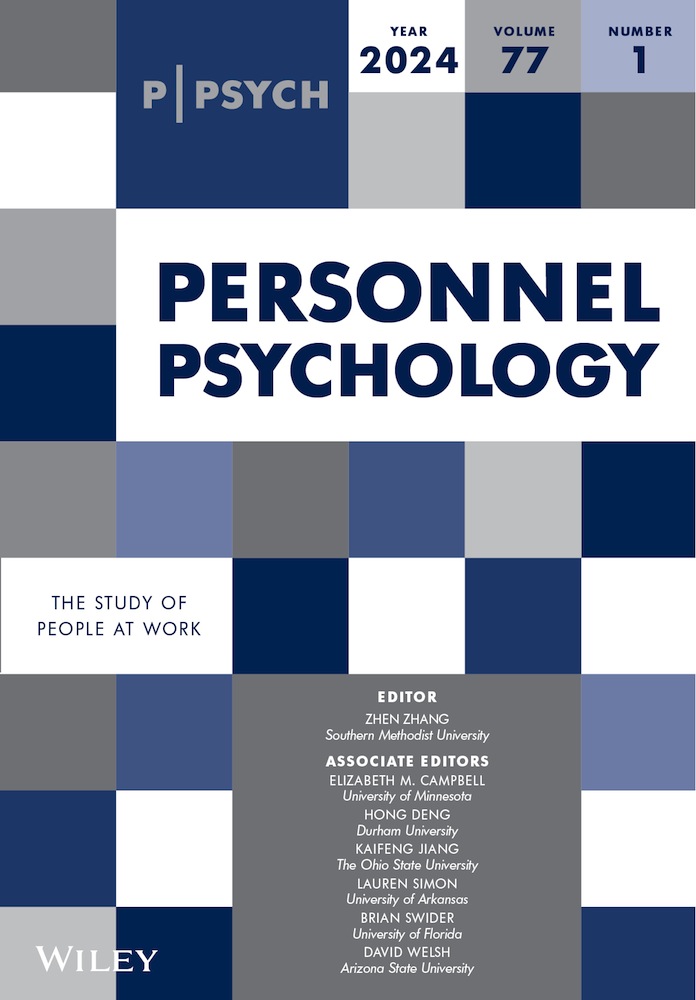“I Didn't See That Coming!” A daily investigation of the effects of as‐expected and un‐expected workload levels
IF 6.4
2区 心理学
Q1 MANAGEMENT
引用次数: 0
Abstract
Workload is a ubiquitous feature of the workplace and an exemplar occupational stressor. In contrast to other such experiences, workload represents a necessary aspect of employment that cannot be alleviated or removed. It also has both aversive and beneficial aspects; research, therefore, has aimed to examine the circumstances under which its negative effects can be alleviated while still maintaining its potential benefits for individuals and organizations. Such efforts, however, have had mixed success. In this paper, we propose a new way forward by examining the extent to which the concordance of individual expectations about daily workload and actually experienced workload is associated with aversive affective responses (with ultimate impacts of the latter for cross‐day functioning). We test these propositions in two daily studies and find that when experienced workload levels do not align with expectations, individuals experience higher levels of anxiety. Importantly, these effects of unexpected workload are overall stronger in magnitude than the effects of high but expected workload; furthermore, they operate through their impact on individuals’ sense of control. These workload patterns are further indirectly associated with next‐day functioning through sense of control and anxiety. Implications for theory and practice are discussed, together with directions for future research."我没想到会这样!"对预期和非预期工作量水平影响的日常调查
工作量是工作场所无处不在的特征,也是一种典型的职业压力源。与其他此类经历相比,工作量是就业的一个必要方面,无法减轻或消除。它既有令人厌恶的一面,也有有益的一面;因此,研究的目的是探讨在何种情况下既能减轻其负面影响,又能保持其对个人和组织的潜在益处。然而,这些努力的成果参差不齐。在本文中,我们提出了一个新的思路,即研究个人对日常工作量的预期与实际经历的工作量之间的一致性在多大程度上与厌恶情绪反应相关(后者最终会对跨日工作产生影响)。我们在两项日常研究中对这些命题进行了检验,结果发现,当实际工作量水平与预期不一致时,个人会体验到更高程度的焦虑。重要的是,这些意外工作量的影响在总体上要强于预期工作量高的影响;此外,它们还通过对个人控制感的影响而发挥作用。这些工作量模式通过控制感和焦虑进一步间接地与第二天的功能相关联。本文讨论了理论和实践的意义,以及未来的研究方向。
本文章由计算机程序翻译,如有差异,请以英文原文为准。
求助全文
约1分钟内获得全文
求助全文
来源期刊

Personnel Psychology
Multiple-
CiteScore
10.20
自引率
5.50%
发文量
57
期刊介绍:
Personnel Psychology publishes applied psychological research on personnel problems facing public and private sector organizations. Articles deal with all human resource topics, including job analysis and competency development, selection and recruitment, training and development, performance and career management, diversity, rewards and recognition, work attitudes and motivation, and leadership.
 求助内容:
求助内容: 应助结果提醒方式:
应助结果提醒方式:


